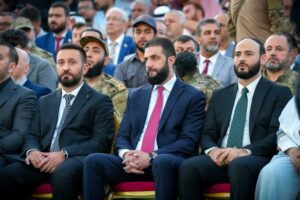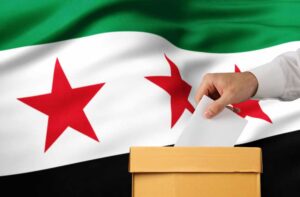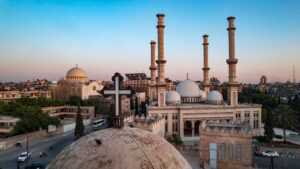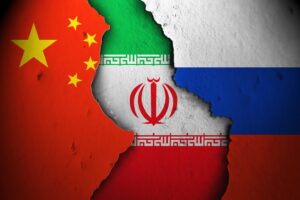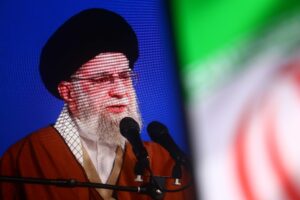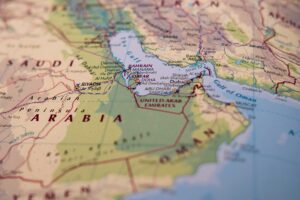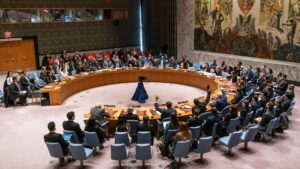On 8 January 2022, the Egyptian government quietly released Ramy Kamel, a Coptic Christian human rights activist. It was the day after Coptic Christmas: celebrations at the Coptic Cathedral of the Nativity of Christ in Egypt’s new administrative capital had featured a now-familiar love-in between the Coptic Patriarch and President Abdel Fattah al-Sisi.[i] Kamel had been arrested just over two years previously on unsubstantiated charges including “collaborating with a terrorist organization” and “spreading false news.” His arrest had come hours before his departure to testify at the United Nations Forum on minority issues.[ii] Kamel’s liberation was welcomed by human rights organizations focused on the plight of Egypt’s Coptic Christians. But the length of his detention and the timing of his release only served to underscore the insistence of the Egyptian state on dealing with Copts as a collective rather than as individuals. His release stood as a concession to the Church when celebrating Christmas rather than to the civil society to which Ramy belonged. While the Coptic Orthodox Church enjoys cordial relations with the regime, Coptic activists speaking out about the violation of the rights of individual Christians are consistently persecuted. Simply put, Coptic institutions enjoy significant freedoms whilst Copts as citizens do not.
The Coptic Heritage
The contemporary story of Egypt’s Copts highlights their remarkable survival amid persecution, chaos, and the decline of their community. Copts are Egypt’s indigenous Christians. The term ‘Copt’ arises from a Greek name for Egypt, and it is applied to both devotees of the venerable Coptic Orthodox Church and other Egyptian Christians. At the time of the Muslim invasion of Egypt in 639 CE, Christians made up a vast majority of the Egyptian population. They remained the majority for the next two or three centuries, but over time it became expedient for many to convert to Islam and their proportion of the Egyptian population declined gradually. Today, they make up no more than 8-10% of the population, though their numbers are hotly disputed.
By the middle of the twentieth century, the struggle over who spoke for Copts pitted frustrated lay activists against the patriarch.
Beginning in the nineteenth century, the dominant Coptic Orthodox Church began a period of modernization. Historians often present this story as a struggle between the laity, who had long enjoyed a central place in the leadership of the community, and the church hierarchy, who sought to preserve the unique theology and heritage of the church, including its holy sites.[iii] The Coptic Orthodox Church is led by the Coptic bishop of Alexandria, known more popularly as the patriarch or Pope. By the middle of the twentieth century, the struggle over who spoke for Copts pitted frustrated lay activists against the patriarch. Lay critics were disgusted over the sale of key offices within the Church, leading to a brief but dramatic moment in July 1954 when activists invaded the patriarchal residence and abducted Pope Yusab II,[iv] demanding the abdication of the pope. Their complaints led to reforms within the Church but the hierarchy stopped short of handing over power to lay authorities.
Under Yusab’s successors, Pope Kyrillos VI (r.1959-1971) and Pope Shenouda III (r.1971-2012), the Church regained its popularity and strength as the institutional anchor of the Christian community. Kyrillos and Shenouda had been leading lights in a renewal movement since the early 1930s. Monasteries, which had been reduced to small numbers of ageing monks, were given a new lease on life. The Church blessed the expansion of Sunday School education among the laity, increasing Biblical and theological literacy, and interest of a new generation of Copts. The rise of Shenouda III to the patriarchal throne in 1971 brought one of the central figures of the religious renewal to power at a time of great uncertainty in Egypt. As S.S. Hasan describes, Shenouda appointed an unprecedented number of new general bishops to lead the church and centralized the Church administration, expanding the size and influence of the Copts’ social efforts.[v]
A Partnership of Church and State
The republican administrations of the 1950s to the 1970s created an informal corporatist arrangement whereby Church authorities would represent the interests of Christians whilst the government recognized the unique authority of the patriarch.
The Egyptian Free Officers revolt of 1952 eventually brought to power Gamal Abdel Nasser in 1954. Nasser embarked upon a campaign to socialize the Egyptian economy, undercutting the power of established economic elites, including many wealthy Copts. At the same time, the government sought to create new institutional means to govern Egyptian society. It found the Coptic Orthodox Church a willing and effective partner. The republican administrations of the 1950s to the 1970s created an informal corporatist arrangement whereby Church authorities would represent the interests of Christians whilst the government recognized the unique authority of the patriarch. Official recognition of the religious leadership as both spiritual and temporal head of the Christian community hearkened back to the system of millets (national communities) administered by the former Ottoman Empire.[vi] Scholars have referred to this special relationship of the regime and the church leadership as a millet partnership or neo-millet system.[vii]
The neo-millet system has persisted in spite of rocky moments in the relationship between the state and the church.[viii] In the 1970s, Pope Shenouda III reacted to Egyptian President Sadat’s efforts to cater to political Islam while restructuring the Egyptian economy and signing a peace agreement with Israel by leading demonstrations criticizing the president. This contributed to the air of crisis that clouded the last days of the Sadat administration.[ix] In September 1981 Sadat sent the pope into internal exile at the Monastery of Anba Bishoy, northwest of Cairo. Four years later, Shenouda was reinstated by President Hosni Mubarak. His relationship with the new president was cordial and reliable. He opted for a deliberate return to the neo-millet style of bargaining that had characterized the reign of his predecessor. Mubarak responded by acknowledging the primacy of the Pope among Christians. The relationship remained stable despite a spate of Islamist attacks on Copts in the 1990s and the eruption of intercommunal strife in the small Upper Egyptian town of al-Kosheh in 1997 and 1999.[x]
Shenouda’s death in March 2012 came soon after the dramatic events of the Egyptian revolution, which he had opposed. His successor, the current Pope Tawadros II, initially signaled his intent to stay out of politics. But, in July 2013, he stood beside several other Egyptian luminaries and General Abdel Fattah al-Sisi when the military announced the overthrow of Egypt’s first democratically-elected president, Mohamed Morsi. Islamist supporters of the former president took aim at the Church for its perceived support of Sisi and staged numerous attacks on church buildings and individual Copts over the next few years. In office, President Sisi has cultivated the support of Christians by patronizing the church – paying for new construction of church facilities (including the cathedral mentioned above), visiting Coptic Christmas celebrations, and vowing vengeance on those who have attacked Copts.
Coptic spaces throughout Egypt, from churches to monasteries to retreat centres, reinforce the importance of the Church in the lives of Copts.
The neo-millet partnership between church and state elevates the status of Church institutions as sanctuaries for the Coptic community. In her recent ethnography of the Coptic Orthodox Church, Angie Heo argues that Copts articulate their identity through a religious lens because of the central role the Church plays in their lives.[xi] Coptic priests and monks are visible representatives of the church and command respect among the laity. Coptic spaces throughout Egypt, from churches to monasteries to retreat centres, reinforce the importance of the Church in the lives of Copts. More controversially, the Church oversees personal status laws such as those governing divorce and remarriage.[xii] The Church mediates the veneration of saints, declaring as martyrs Christians killed by Islamist terrorists.[xiii] It also mitigates criticism of the regime by accepting its patronage and praising the government’s best efforts to keep the community safe.
The role of churches as focal points of the community is nowhere more evident than among the zabellin (garbage collectors) of Cairo. For several decades, a large community of garbage collectors has grown up on the eastern edge of the city, under the shelter of the cliffs of Moqattam. Here, an enterprising priest set up a ministry to the garbage collectors, most of whom are Copts.[xiv] After the discovery of an ancient site of worship, a group of cave churches were excavated out of the cliff face. The cave church complex now houses numerous such open-air churches and serves the needs of the local zabellin – but it has also become a place of pilgrimage for Copts throughout Egypt and foreign visitors as well.
While Copts enjoy the benefits of a clearly defined Christian identity, this has made them equally vulnerable to Islamist radicals.
In her work, Heo cautions that the sheltering role played by Church institutions also serves to separate Copts from their Muslim compatriots in daily life.[xv] While Copts enjoy the benefits of a clearly defined Christian identity, this has made them equally vulnerable to Islamist radicals. In 2015 the tragic abduction and execution of 20 Copts on a beach in Libya at the hands of Islamic State claimed headlines around the world. It also underscored the modern persecution of Christians throughout the Middle East in the decade following the protests of 2011. Islamist majoritarianism proved lethal for Christians in Syria and Iraq as well. In Egypt, most Christians mistrusted and even feared the Islamists after their victory in the 2011-12 elections.
Two Inconclusive Revolutions
The Church and the regime both faced challenges amid the 2011 revolution and its aftermath. The military oversaw the transition of power away from Hosni Mubarak toward the uncertain future of a democratic Egypt. Ultimately, the chaotic rule of Mohamed Morsi sowed the seeds for the return of praetorian authoritarianism under Abdel Fattah al Sisi. Islamists proved an effective foil for the military in the wake of Morsi’s overthrow in 2013. A central focal point of Islamist anger was the perceived support of Copts for the regime – in the summer of 2013 numerous churches were burned; later others were targeted for suicide bomb operations, Copts have been attacked and massacred.
At the same time, the rise of a plurality of civil movements and activists during the revolutionary period inspired many Copts to criticize the role of the Church in directing the lives of its adherents.[xvi] From 2011 to 2013, Christians sought to expand their liberties beyond the bounds set by church and state. The longstanding position of the church against no-fault divorce came under criticism. Lay Copts (including activist Ramy Kamel) took up the cause of Coptic rights to non-discrimination, equal status before the law, and the right to build and refurbish church properties – all matters traditionally left to the management of the Church hierarchy. The return of the stable neo-millet partnership effectively brought an end to these demands.
Today, the Church stands in a strong position as a partner with the corporatist state to determine the future of Copts. But a variety of voices remain beneath the surface, demonstrating the vitality of associational life among Copts and providing a model for a future, more pluralistic Egyptian society.
[i] “Sisi Greets Egyptian Copts on Christmas, Says the ‘New Republic’ will be Based on Dream, Work and Free of Discrimination”, Egypt Today [online], 6 January 2022. Available https://www.egypttoday.com/Article/1/111615/Sisi-greets-Egyptian-Copts-on-Christmas-says-the-‘New-Republic’ (Accessed 17 January 2022).
[ii] “USCIRF Welcomes Egypt’s Release of Coptic Activist Ramy Kamel”, United States Commission on International Religious Freedom [online], 12 January 2022. Available https://www.uscirf.gov/news-room/releases-statements/uscirf-welcomes-egypts-release-coptic-activist-ramy-kamel (Accessed 17 January 2022).
[iii] Magdi Guirguis and Nelly Van Doorn-Harder, The Emergence of the Modern Coptic Papacy (Cairo: AUC Press, 2011), 81.
[iv] Guirguis and Van Doorn-Harder, Emergence of the Modern Coptic Papacy, 123-126.
[v] S. S. Hasan, Christians versus Muslims in Modern Egypt: the century-long struggle for Coptic equality (Oxford: Oxford University Press, 2003), 123-135.
[vi] Karen Barkey and George Gavrilis, “The Ottoman Millet System: Non-territorial autonomy and its Contemporary Legacy”, Ethnopolitics 15, no.1 (2016), 24-42.
[vii] Paul Sedra, “Class Cleavages and Ethnic Conflict: Coptic Christian communities in modern Egyptian politics”, Islam and Christian-Muslim Relations 10, no.2 (1999): 219-235. Paul S. Rowe, “Neo-Millet Systems and Transnational Religious Movements: the Humayun Decrees and Church Construction in Egypt”, Journal of Church and State 49, no.2 (2007): 329-350.
[viii] Mariz Tadros, “Vicissitudes in the Entente between the Coptic Orthodox Church and the State in Egypt” (1952-2007)”, International Journal of Middle East Studies 41, no.2 (2009), 269-287.
[ix] Nadia Ramses Farah, Religious Strife in Egypt (New York: Gordon and Breach, 1986).
[x] Paul S. Rowe, “Four Guys and a Fax Machine? Diasporas, New Information Technologies, and the Internationalization of Religion in Egypt”, Journal of Church and State 43, no.1 (2001), 81-92.
[xi] Angie Heo, The Political Lives of Saints (Oakland: University of California Press, 2018), 10.
[xii] Sebastian Elsässer, “The Coptic Divorce Struggle in Contemporary Egypt”, Social Compass 66, no.3 (2019), 333-351.
[xiii] Martin Mosebach, The 21: a Journey into the Land of Coptic Martyrs, trans. Alta L. Price (New York: Plough Publishing House, 2019).
[xiv] Gaétan du Roy, “Father Samaan and the Charismatic Trend within the Coptic Church”, in Nelly Van Doorn-Harder, ed., Copts in Context: Negotiating Identity, Tradition, and Modernity (Columbia: University of South Carolina Press, 2017), 66-79.
[xv] Heo, Political Lives of Saints, 200.
[xvi] Paul S. Rowe, “The Church and the Street: Copts and Interest Representation from Mubarak to Sisi”, Religion, State, and Society 48, no.5 (2020), 343-360.







